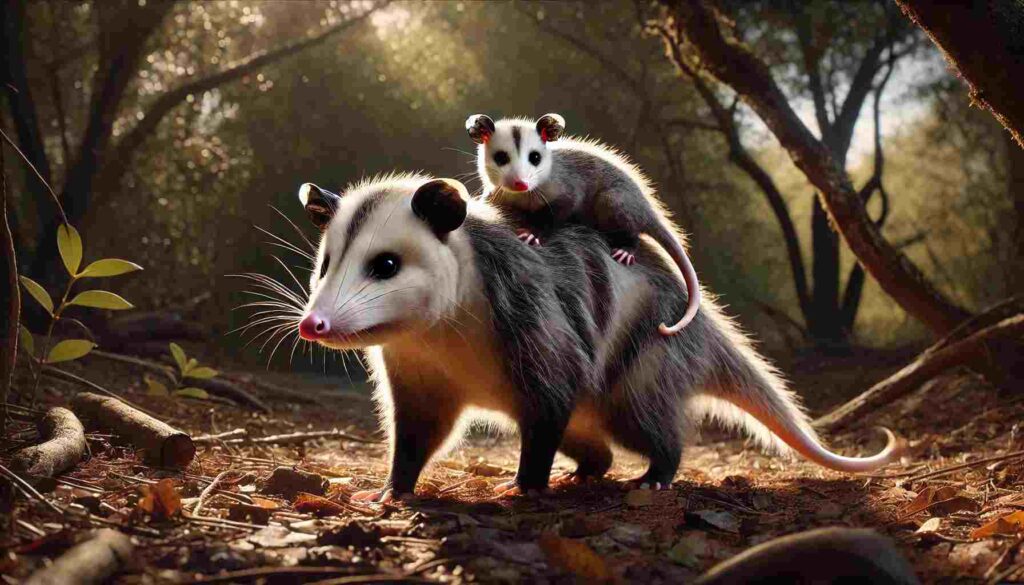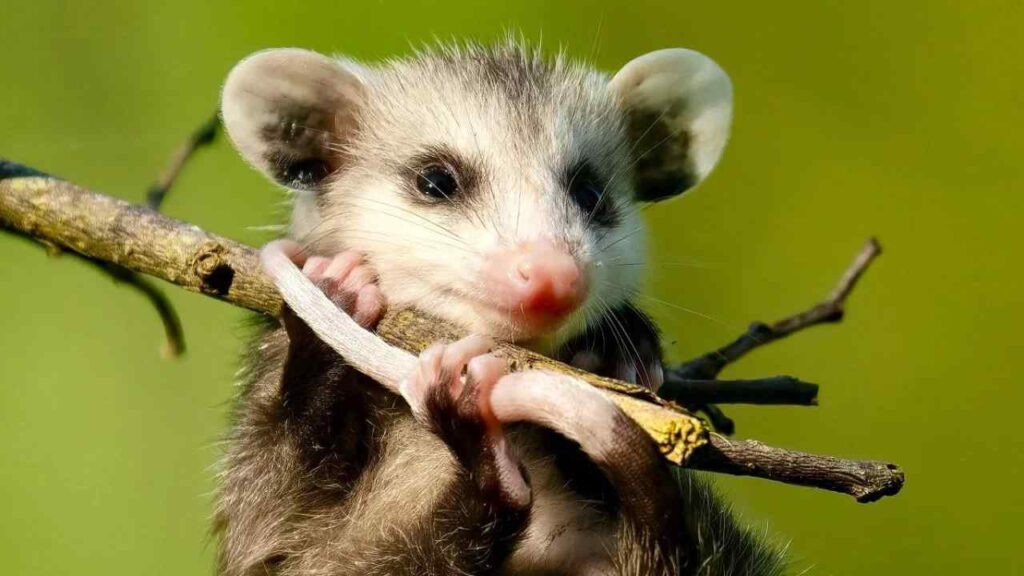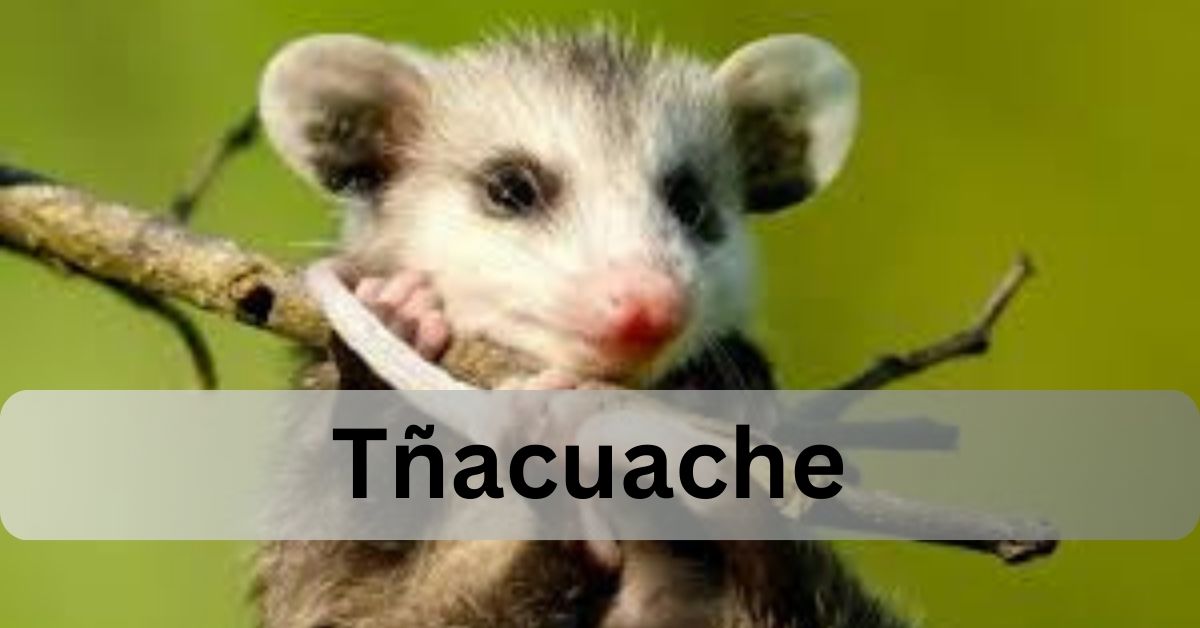The tñacuache, more commonly known as the opossum, is a remarkable marsupial found throughout the Americas.
The tñacuache, commonly known as the opossum, is a versatile marsupial native to the Americas. It is known for its nocturnal habits, omnivorous diet, and important ecological role in controlling pests and cleaning up carrion.
This article delves into various aspects of the tñacuache, including its physical characteristics, habitat, behavior, and cultural significance.
What Is A Tñacuache?
The term tñacuache is used predominantly in Latin America to refer to the opossum, a marsupial belonging to the family Didelphidae. This family encompasses over 100 species, with the Virginia opossum (Didelphis virginiana) being one of the most well-known in North America.

Opossums are characterized by their distinctive physical features and are part of the order Didelphimorphia. In English, they are often referred to as opossums, though in some regions, they are called possums. Despite these different names, they share common traits and behaviors that make them a unique subject of study.
Physical Characteristics:
Size and Appearance:
Tñacuaches vary in size depending on the species. Generally, they range from 2 to 3 feet in length, including their tail. For instance:
- Virginia Opossum: Weighs between 4 to 14 pounds with a body length of about 15 to 20 inches.
- South American Opossum: Smaller species can weigh as little as 1 to 2 pounds.
Their physical appearance includes a long, prehensile tail that is used for grasping and balancing. Their fur is typically coarse and ranges in color from white to gray or brown, depending on the species. They have a pointed snout and large eyes, which contribute to their nocturnal lifestyle.
Adaptations:
- Prehensile Tail: This tail is crucial for climbing and maintaining balance. It helps them navigate through trees and grasp objects.
- Omnivorous Diet: Opossums have a versatile diet that includes fruits, insects, small animals, and carrion. This adaptability in diet allows them to thrive in various environments.
Read Also:
Aeb Settlement Claims Administrator – A Complete Guide!
Habitat And Distribution – Geographic Range!
Tñacuaches are native to the Americas, with their range extending from the southern United States to South America. They inhabit a diverse array of environments, including:
- Forests: Provide shelter and a rich source of food.
- Grasslands: Offer open areas with sparse vegetation.
- Urban Areas: Adapt well to cities and suburbs, scavenging for food in human settlements.
Their adaptability to different habitats makes them a widespread and resilient species.
Behavior And Diet:
Nocturnal Habits:
Tñacuaches are primarily nocturnal, meaning they are most active during the night. Their large eyes and keen sense of smell are adapted for finding food in low light conditions.
Social Structure:
Opossums are generally solitary animals. Unlike some mammals, they do not form large social groups. However, they may share dens, especially during colder months or in urban settings where resources are abundant.
Diet:
Their omnivorous diet includes:
- Fruits: They consume a variety of fruits, which provide essential nutrients.
- Insects: Play a significant role in their diet, especially when other food sources are scarce.
- Small Animals: Includes rodents and amphibians.
- Carrion: They help decompose dead animals, playing an important role in nutrient recycling.
Reproduction Of Tñacuache:
Breeding Season:
The breeding season for tñacuaches can vary by species and location, but they generally breed once or twice a year.
Gestation Period:
The gestation period is relatively short, lasting about 12 to 14 days. After birth, the tiny, undeveloped young crawl into the mother’s pouch for further development. The young remain in the pouch for a few months before emerging and continuing to develop in the safety of the den.
Threats and Conservation:
Threats:
- Habitat Destruction: Urbanization and deforestation threaten their natural habitats.
- Roadkill: Many tñacuaches are killed by vehicles while crossing roads.
- Predation: Natural predators include owls, foxes, and bobcats.
Conservation:
Although most opossum species are not currently endangered, their populations can be affected by habitat loss and human activities. Conservation efforts focus on:
- Preserving Natural Habitats: Protecting forests and grasslands where tñacuaches live.
- Mitigating Human-Wildlife Conflicts: Reducing roadkill through wildlife crossings and public awareness.
The Tñacuache In Culture:
Latin American Folklore:
In various Latin American cultures, the tñacuache holds a special place in folklore and mythology. It is often depicted as a symbol of resilience and adaptability. Stories and legends featuring the tñacuache highlight its cleverness and ability to thrive in challenging environments.
Popular Culture:
In popular culture, the tñacuache is represented in cartoons, educational programs, and other media. It is typically portrayed as a quirky and resourceful animal, adding charm and educational value to various forms of entertainment.

Adaptation to Urban Environments:
Tñacuaches have shown remarkable adaptability to urban environments, which has allowed them to thrive in cities and suburban areas. Their omnivorous diet enables them to take advantage of a wide range of food sources, including garbage, pet food, and garden fruits, making urban areas an ideal habitat.
Additionally, their nocturnal nature helps them avoid human activity during the day, reducing the risk of conflicts. Their ability to use available shelter, such as attics, sheds, and garages, further demonstrates their adaptability. These traits have allowed tñacuaches to not only survive but often flourish in urban settings.
Read Also:
Https://Guia-Automovil.Com/2020/10/07/Los-3-Mejores-Autos-Clasicos-De-Ford – A Simple Guide!
Ethical Wildlife Management:
Ethical wildlife management involves practices that prioritize the well-being of animals like tñacuaches while balancing human needs and environmental conservation. This approach includes humane methods for controlling wildlife populations, ensuring that animals are treated with respect and minimal harm.
For tñacuaches, ethical management might involve non-lethal deterrents to prevent them from entering homes or accessing human food sources, as well as efforts to preserve their natural habitats. Education and awareness campaigns are also key, helping communities understand the ecological role of tñacuaches and promoting coexistence rather than eradication.
Future Research Directions:
Future research on tñacuaches could focus on several key areas to enhance our understanding and conservation efforts. One avenue is studying their adaptation to urban environments, exploring how tñacuaches navigate and survive in increasingly human-dominated landscapes.
Additionally, research could investigate the genetic diversity among different tñacuache populations to better understand their evolutionary history and resilience to environmental changes.
Another important area is the impact of climate change on their distribution and behavior, providing insights into how shifting climates might affect their survival and the ecosystems they inhabit.
Finally, further research into their role in seed dispersal and pest control could reveal new ways to harness their ecological benefits for sustainable environmental management.
FAQs:
What is a tñacuache?
A tñacuache is the Spanish term for the opossum, a marsupial native to the Americas known for its unique adaptations and diverse diet.
Where can I find tñacuaches?
Tñacuaches are found throughout the Americas, from the southern United States to South America. They inhabit forests, grasslands, and urban areas.
What do tñacuaches eat?
Tñacuaches are omnivores with a highly varied diet. They consume a wide range of foods, including fruits, insects, small animals like rodents and birds, and carrion.
Are tñacuaches endangered?
Most opossum species are not considered endangered, but they face threats from habitat destruction and urbanization.
How do tñacuaches adapt to their environment?
Tñacuaches have several adaptations, including a prehensile tail for climbing and an omnivorous diet that allows them to thrive in diverse habitats.
Conclusion:
The tñacuache, or opossum, is a fascinating marsupial with unique characteristics and an essential role in its ecosystem. From its nocturnal habits and versatile diet to its cultural significance and adaptability, the tñacuache is a remarkable animal deserving of recognition and conservation efforts.
Read More:



